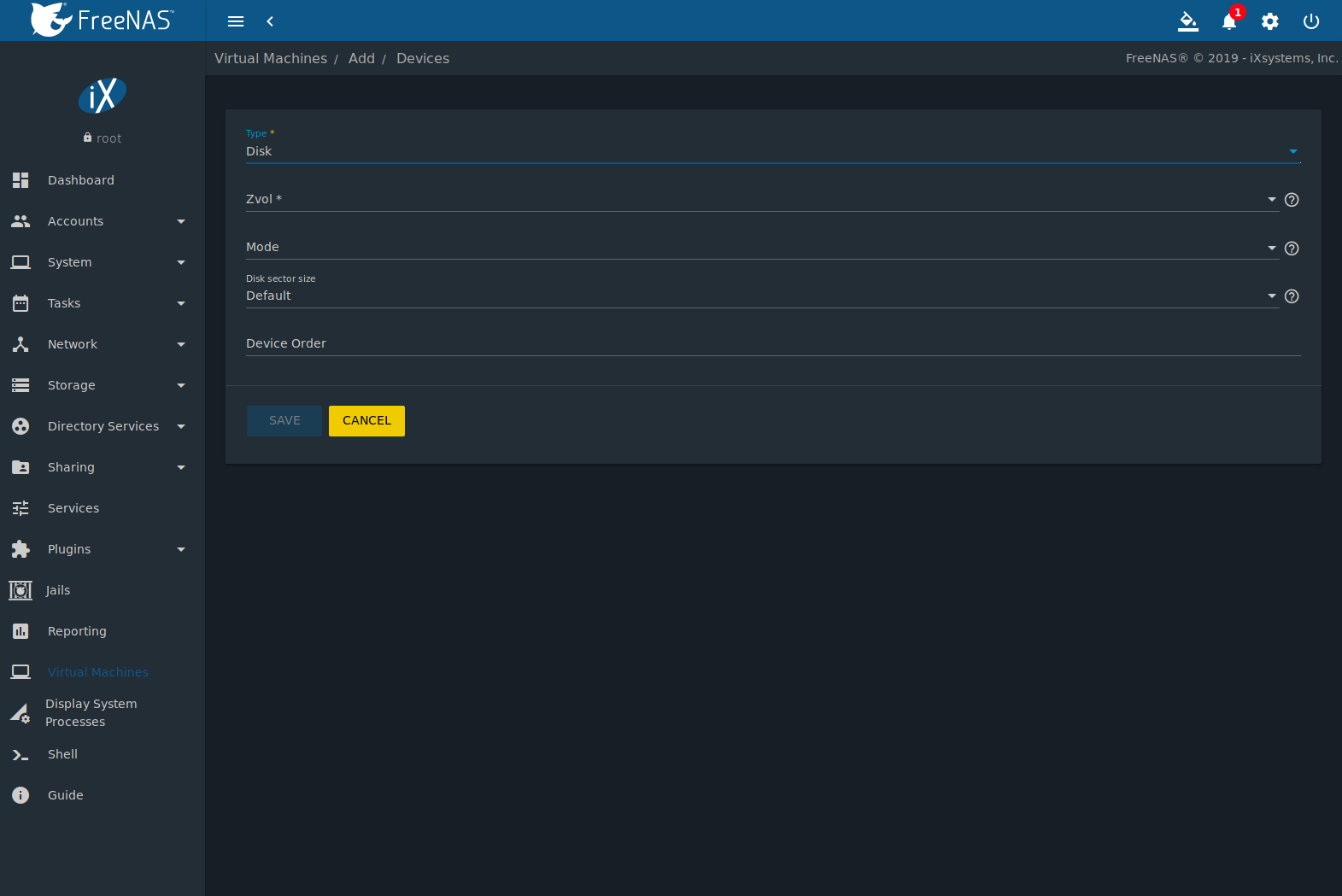Freenas Virtio Drivers

FreeNAS® VMs use the bhyve(8) virtual machine software. VirtIO uses paravirtualized drivers and can provide better performance, but requires the operating. However, I can't seem to figure out how to install VirtIO on either FreeNAS or NAS4Free. Since NAS4Free is based on FreeBSD 9 I started with this but even though NAS4Free is based on FreeBSD 9 it doesn't seem to be a full install? Thanks for your help! NAS frontend for KVM, 9p, virtio. Windows 7 as kvm guest installation with virtio drivers - detected.
Hello Forum, Firstly wanted to say.Proxmox 'noob' so be gentle with me!! Secondly, I have been using VMWare ESXi since V4 in a home office environment and REALLY want to be able to migrate over to Proxmox. In fact, I plan to move everything over to Linux/FreeBSD (I also run FreeNAS for VM storage as well) eventually. OK, on to the issue I am having.
I have successfully installed a Windows 2003 Server and a Linux Mint system on Proxmox, using the standard disk drivers (IDE), however, I would like to utilize the VIRTIO drivers instead. Having read a few posts about these drivers it appears they are much better suited. Details of the VM • • When I boot the VM, the install starts. • It gets to the point where it wants to know where to install Windows and I click on 'Load Driver' • Browse • Open up the CDROM where the VirtIO drivers live • • When I click OK all I get are two INF files availabe, BALLON.INF (which I thought was a memory driver) and VIOSER.INF which is a serial driver. Where are the drivers for the hard drives? Have I downloaded the wrong file?
I have tried three different VIRTIO downlaods • virtio-win-0.1-100.iso • virtio-win-0.1.103.iso • virtio-win-0.1.96.iso and none of them work. Can anyone shed any light on where I am going wring with this? Tom, tomstephens89, Thanks for your feedback. + I followed the Proxmox youtube video (just in case I was doing something REALLY stupid). 
I even downloaded the ISO file that was used in the video and followed the video verbatim, and I still only got two drivers available and not four as per the video (no Redhat drivers available) + I destroyed the original VM and re-created using IDE for the driver. After the OS was installed, I added a NIC (VIRTIO) and successfully added the VIRTIO drivers using the latest ISO from within Windows, however, I had to let Windows search the entire ISO for the correct file as I couldn't figure out which folder the VIRTIO drivers were in. I am working away from home this week so do not have access to the system, as soon as I get back I will post the results.
Tom, tomstephens89, Thanks for your feedback. + I followed the Proxmox youtube video (just in case I was doing something REALLY stupid). I even downloaded the ISO file that was used in the video and followed the video verbatim, and I still only got two drivers available and not four as per the video (no Redhat drivers available) + I destroyed the original VM and re-created using IDE for the driver. After the OS was installed, I added a NIC (VIRTIO) and successfully added the VIRTIO drivers using the latest ISO from within Windows, however, I had to let Windows search the entire ISO for the correct file as I couldn't figure out which folder the VIRTIO drivers were in. I am working away from home this week so do not have access to the system, as soon as I get back I will post the results.
I am currently running FreeNAS as a VirtualBox guest under linux (openSUSE 12.2 x64). It all works correctly, but overall performance is somewhat below par. I understand that VirtualBox does not provide Guest Additions for freeBSD guests, but the kvm virtio framework is available from I tested virtio-net on a nas4free testbed (freeBSD 9.1) and it seems to be working fine. Has anyone tried installing it on FreeNAS 8.3.x and if so, how did you do it (it being nanoBSD based)? I would imagine running FreeNAS as a VM guest under a Linux host is quite a common scenario, so maximising its efficiency in this case should be a reasonable aspiration. Is there any likelihood that the virtio drivers would be included by default in upcoming versions? Any thoughts?